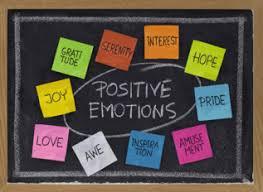Eight Reasons Why It's So Hard To Really Change Your Behavior
Curated from: forbes.com
Ideas, facts & insights covering these topics:
8 ideas
·9.7K reads
13
Explore the World's Best Ideas
Join today and uncover 100+ curated journeys from 50+ topics. Unlock access to our mobile app with extensive features.
Motivated By Positive Emotions
Negative emotions may trigger us to think about everything we’re not doing, or feel like we’re doing wrong, but they're ineffective for making changes that stick. Real change needs a positive platform to launch from; we need positive, self-edifying reasons for taking on the challenge.
1.07K
1.92K reads
Trapped By Thinking Fallacies
Feeling overwhelmed by trying to change a behavior often makes us charge into change, and see failure as a sign of incapacity. But this straps us into a no-win situation because you are unlikely to sustain the initial momentum to change for long.
If we really want to change, one of the first things we have to do is take all-or-nothing off the table, and purge a few other thinking errors while we’re at it.
794
1.25K reads
More Than We Can Handle
It’s almost never possible to tackle all of a change at once. We have to start with particular, very specific and measurable actions.
Each specific action is one forkful of behavior change and a set of those actions engaged over time results in a cumulative change. And accompanying those cumulative actions, we need realistic and specific goals as they provide targets to measure ourselves against.
764
1.16K reads
Neglecting The Tools
We must be somewhat knowledgeable about what we need to change in order to come up with and set up a practical plan that will lead to sustained change. Some of the knowledge and tools necessary will be specific to us, others universal, but without putting the effort we won’t find either.
645
962 reads
Try Too Much
Trying to take on multiple behaviors at once is a surefire way to send all of them into a ditch. The resources we rely on to make change happen are limited: attention, self-control, motivation, etc.
But other areas of our lives also use those resources, so even just one additional behavior-change commitment is a big deal. Trying to change too much places unrealistic demands on those resources and dooms the efforts early on.
780
1.1K reads
Underestimating The Process
Change is never just one thing, it’s a lot of connected things, and sustained change doesn’t happen without a process that wraps in all of the pieces.
Long-term behavior change involves steps. It’s a tough, process-oriented challenge to slowly change the behavior and believing otherwise demotivates.
747
1.08K reads
Failure Is Common
Failing is part of the process, and it’s probably going to happen more than once. Failing reveals to you what deserves your attention and energy in the next round.
See failing as a step, not the end or an excuse to stop trying.
853
1.14K reads
Making Commitments
Behavior change research tells us that not making a commitment leads to failure.
We need a "commitment device" that firmly establishes what we're going to do and how we're going to do it. Everything else starts there.
710
1.08K reads
IDEAS CURATED BY
Whenever I have a problem I just sing, then I realize my voice is worse than my problem
Christopher C.'s ideas are part of this journey:
Learn more about personaldevelopment with this collection
How to make rational decisions
The role of biases in decision-making
The impact of social norms on decision-making
Related collections
Similar ideas
5 ideas
The most effective way to implement a behavior change
fastcompany.com
8 ideas
8 Good Reasons Why Change Is Hard
dumblittleman.com
5 ideas
Why Is Change So Hard?
psychologytoday.com
Read & Learn
20x Faster
without
deepstash
with
deepstash
with
deepstash
Personalized microlearning
—
100+ Learning Journeys
—
Access to 200,000+ ideas
—
Access to the mobile app
—
Unlimited idea saving
—
—
Unlimited history
—
—
Unlimited listening to ideas
—
—
Downloading & offline access
—
—
Supercharge your mind with one idea per day
Enter your email and spend 1 minute every day to learn something new.
I agree to receive email updates








